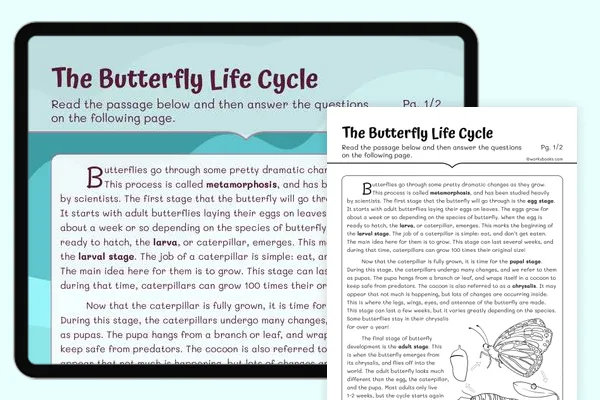Bats in the Night — Reading Comprehension
Grades
- 1
- 2
- 3
Standards
- RI.3.1
- RI.4.4
- RI.4.3
PRINT+DIGITAL RESOURCE
This learning resource is available in interactive and printable formats. The interactive worksheet can be played online and assigned to students. The Printable PDF version can be downloaded and printed for completion by hand.
About This Reader
This informative first-grade reading passage delves into the intriguing world of bats, highlighting their nocturnal nature and unique adaptations. The text covers key points about bats, including their classification as mammals, use of echolocation for navigation and hunting, diverse diets, and wing structure. It also emphasizes the ecological importance of bats in controlling insect populations and pollinating plants. The passage is crafted to engage young readers while enhancing their knowledge about animal diversity, adaptations, and ecological roles, in line with first-grade science and reading comprehension objectives.
Perfect For:
👩🏫 Teachers
- • Reading comprehension practice
- • Auto-graded assessments
- • Literacy skill development
👨👩👧👦 Parents
- • Reading practice at home
- • Comprehension improvement
- • Educational reading time
🏠 Homeschoolers
- • Reading curriculum support
- • Independent reading practice
- • Progress monitoring
Reading Features:
📖
Reading Passage
Engaging fiction or nonfiction text
❓
Comprehension Quiz
Auto-graded questions
📊
Instant Feedback
Immediate results and scoring
📄
Printable Version
Download for offline reading
🔊
Read Aloud
Voice-over with word highlighting






















